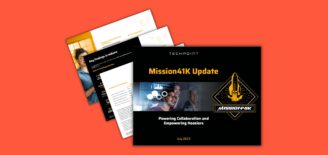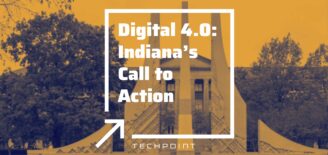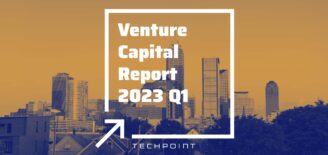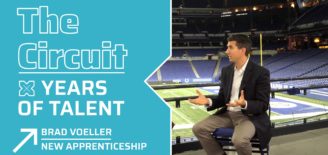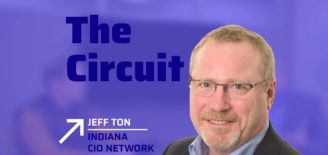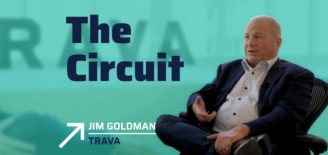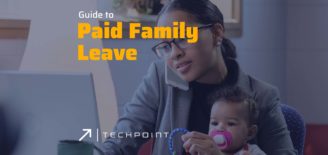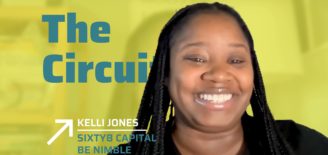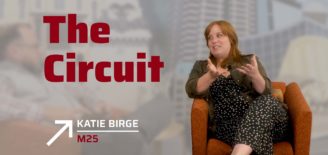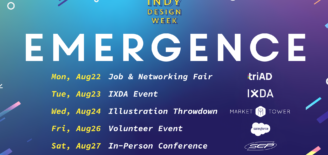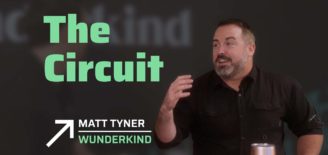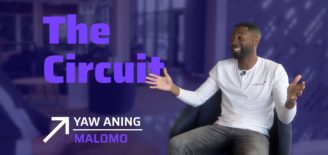#FightForSmall launching Hoosier small-business revolution
Although I work in customer service and marketing, I’m also a social justice activist. That’s probably why the word “fight” drew me to the #FightForSmall launch party.
That’s not an understatement. Hoosier businesses have a fight on our hands. In an evolve-or-die world, 53 percent of Hoosier small businesses do not even have a website. “This keeps me up at night,” said Jayson Manship, lead nerd of inSourceCode, one of the nation’s leading WordPress development shops. Small businesses are the real job creators in the state, national, and global economy. We owe ourselves use of the best tools available.
On Tuesday, about 150 attendees sampled local goodies from Scout’s Treat Truck, Mac Genie, Upland Brewery, and Nameless Catering, then sat down to a lively panel on the unique challenges to Hoosier small businesses. Panelists included Jayson Manship of inSourceCode; Guenter Haines, vice president of enterprise sales at Angie’s List; Brittany Smith, Indiana community manager at Yelp; Rocky Walls, owner of 12Stars Media; and Jacob Schpok of the Indiana Office of Small Business and Entrepreneurship.
The group answered rapid-fire questions from entrepreneurs in rural and urban niche markets including bakers, attorneys, real estate venturists, and an e-commerce specialist, all looking to increase and maintain their online following. Business owners described varying challenges.
“I think there’s a misconception that you have to spend a lot of money to grow a business,” Brittany said. Guenter agreed. Both Yelp and Angie’s List are free to set up a business listing, and a provider only needs two Angie’s List member reviews to gain important search-engine visibility.
“Big things don’t just happen,” Rocky added. It takes more work than just setting up that social media profile and then sitting back. Entrepreneurs must answer every review, put the tools to contribute feedback into customers’ hands, and make this as easy as possible with a direct link to the “Leave A Review” page via any means, whether it be on a business card, in direct email, on the website, on emailed invoices, or all of the above.
“Just supporting large businesses won’t grow the economy, and we recognize that,” Jacob said. He highlighted the Indiana Small Business Development Center’s no-cost resources including one-on-one coaching.
The panel described the development of online consumer relationships as storytelling with a purpose, listening, and answering what customers really want to know. “Ask yourself why they care about what you’re saying and how you can help them,” Rocky said.
“One of the best tools we have as a business today is to engage and to listen,” Jayson added.
A recurrent theme was making engagement and solutions easy for customers. “Searching sucks,” Guenter said. “You need to be the answer, and be right in front of them.”
Online is also frequently just a start. It’s a way to provide answers to frequently asked questions, engage verbally, share videos, and get your invitation to a physical event out to large amounts of people, as well as to find meetup and networking events to grow as a professional and improve your marketing. Indiana small businesses now have the kind of toolbox formerly only available to big business, and it is time to get into the fight.
You can learn more about #FightForSmall and its mission to make Indiana the place where 100 percent of small businesses are online and thriving by visiting the new website.
Attendees were encouraged to find small business resources at isbdc.org. Fight For Small will be hosting events all over the state in coming months, and a lineup of scheduled events can be found on the #FightForSmall website.
For additional perspectives on this event, read the VERGE summary.




